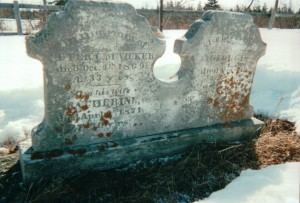 |
Image of a blue mussel (Mytilus edulis) shell.
(Photo credit: Wikipedia) |
Originally published June 8, 2015 bayoffundy.ca/archives/
Although tritium has been continuously released for years from the Point Lepreau Nuclear Power Station into the Bay of Fundy, we have been told repeatedly that it is within the accepted limits and that it is not a hazard to humans since skin penetration does not occur.
The potential for bioaccumulation has been well understood and the concern has always been that organically bound tritium would enter the food chain … this concern has been expressed by many citizens and professionals alike. Generally, the response has been platitudinous at best.
The research outlined below, has established the initial pathway for bioaccumulation from
phytoplankton to blue mussels an abundant shellfish in the Bay of Fundy.
The Blue Mussel is a filter-feeder that funnels water through its body to extract plankton for its nourishment. It is during this process that it takes in phytoplankton that have organically bound tritium. This
tritium becomes locked into the mussels body and, as organically bound tritium, its life is increased many times … estimated to be 50 times by some researchers. Essentially this means it can be passed on to any human or animal consuming these affected bivalves.
This should be of major concern to seafood producers since scallops, clams, and quahogs are also filter-feeders and should be expected to bioaccumulate tritium in the same manner as blue mussels.
My take today. Art MacKay
References:
https://www.nirs.org/radiation/tritium/tritium06122007gphazardreport.pdf
http://www.ccnr.org/Media_Release_2012_02.pdf
http://nuclearsafety.gc.ca/pubs_catalogue/uploads/CNSC_Release_and_Dose_eng_rev2.pdf
http://www.dfo-mpo.gc.ca/Library/261283.pdf
******************************************
KEY RESEARCH
Bioaccumulation of tritiated water in phytoplankton and trophic transfer of organically
bound tritium to the blue mussel, “Mytilus edulis.”
by dunrenard, July 2012
Highlights
► Tritium was bioaccumulated into organic tritium in phytoplankton cells. ► Green algae
incorporated more tritium than the cyanobacteria. ► Organic tritium was transferred from
phytoplankton to blue mussels when ingested. ► Linear uptake of tritium into mussels
indicates a potential for biomagnification. ► Current legislation may underestimate
accumulation of tritium in the environment.
Large releases of tritium are currently permitted in coastal areas due to assumptions that it
rapidly disperses in the water and has a low toxicity due to its low energy emissions. This
paper presents a laboratory experiment developed to identify previously untested scenarios
where tritium may concentrate or transfer in biota relevant to Baltic coastal communities.
Phytoplankton populations of Dunaliella tertiolecta and Nodularia spumigena were exposed at
different growth-stages, to tritiated water (HTO; 10 MBq l−1). Tritiated D. tertiolecta was then
fed to mussels, Mytilus edulis, regularly over a period of three weeks. Activity concentrations
of phytoplankton and various tissues from the mussel were determined.
Both phytoplankton species transformed HTO into organically-bound tritium (OBT) in their
tissues. D. tertiolecta accumulated significantly more tritium when allowed to grow
exponentially in HTO than if it had already reached the stationary growth phase; both
treatments accumulated significantly more than the corresponding treatments of
N. spumigena. No effect of growth phase on bioaccumulation of tritium was detectable in
N. spumigena following exposure.
After mussels were given 3 feeds of tritiated D. tertiolecta, significant levels of tritium were
detected in the tissues. Incorporation into most mussel tissues appeared to follow a linear
relationship with number of tritiated phytoplankton feeds with no equilibrium, highlighting the
potential for biomagnification.
Different rates of incorporation in species from a similar functional group highlight the
difficulties in using a ‘representative’ species for modelling the transfer and impact of tritium.
Accumulations of organic tritium into the mussel tissues from tritiated-phytoplankton
demonstrate an environmentally relevant transfer pathway of tritium even when waterconcentrations
are reduced, adding weight to the assertion that organically bound tritium acts
as a persistent organic pollutant.
The persistence, potential for biomagnification and the increased toxicity of organic tritium
increases the potential impact on the environment following a release of HTO; current
legislation does not adequately take into account the nature of organic forms of tritium and
therefore may be underestimating accumulation and toxic effect of tritium in the environment.
Such information is necessary to accurately assess the distribution of tritium following routine
releases, and to adequately protect the environment and humans.
Source :
http://www.sciencedirect.com/science/article/pii/S0265931X12001890
























